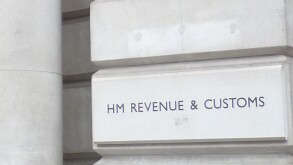
|
Jock McCormack |
Australia finished 2014 with a flurry of ATO rulings, three significant judicial decisions (one each on income tax/royalties, GST and stamp duty) and a backlog of important tax reforms including to the Managed Investment Trust regime, broader trust reforms and further tax consolidation integrity rules. Briefly, in Commission of State Revenue (Vic) v Lend Lease Development Pty Limited, the High Court held that the consideration for the transfer of land in Victoria included contribution payments and other construction covenants payments made under a development agreement in respect of works carried out after acquisition, as well as the price for the land transfers.
Further, the High Court provided much needed certainty over the GST consequences of the sale of tenanted commercial and residential properties in the Commissioner of Taxation v MBI Properties Pty Limited case.
Thirdly, the Seven Network Limited v Federal Commission of Taxation case involved whether certain payments made to the International Olympic Committee by the Seven Network (one of our free-to-air television networks) for broadcasting rights to the 2004 to 2008 Olympic Games under a Signal Utilisation Deed, were a royalty under article 12 of the Australian-Swiss double tax treaty.
The nature of the International Television Signal (ITVR signal) and how Network Seven received that signal were critical in the decision. The data in the ITVR signal could only be converted to television coverage by use of the appropriate receiving device.
The Australian-Swiss treaty in article 12.3 describes a royalty as, among other things, payments made as consideration for the use of, or the right to use, any copyright or other like property or right.
Bennett J in summary held that the payments made to the IOC were not a cinematograph film and not copyright or other like property or right. These rights are only limited to Australian statutory rights, that is, copyright.
Most importantly, the ATO released taxation ruling TR2014/8 on December 17 2014 which outlines the ATO's views on what transfer pricing documentation taxpayers are expected to prepare and keep in order to establish a reasonably arguable position and minimise penalties in the event of a transfer pricing adjustment. The key record-keeping requirements are contained in sub-division 284-255 of schedule 1 of sub-division 284-E of the Taxation Administration Act 1953 and these focus, among other things, on records that establish arm's-length conditions, transfer pricing methodologies and how the transfer pricing rules have been applied to the relevant transactions.
A particularly relevant and challenging aspect of the ATO transfer pricing documentation ruling will be the guidance provided on the potential application of the reconstruction provision (section 815-130 of the Income Tax Assessment Act 1997), including by reference to the form and substance of the commercial or financial relations between the parties. For the taxpayers currently preparing and submitting income tax returns for the first year of formal application of these specific transfer pricing documentation requirements, the ATO ruling will be extremely timely and provide useful guidance.
While 2015 offers a busy year for further tax reform, including the Australian government's (including with the newly appointed Assistant Treasurer, Josh Frydenberg) anticipated options paper on a broad range of tax reform options including GST, we do confidently expect much progress on the Managed Investment Trust reforms and certain Board of Tax reviews including the debt/equity rules and the arm's-length debt test as it applies to thin capitalisation.
Finally, on January 14 2015 the government released draft legislation and regulations dealing with improvements to the taxation of employee share schemes.
Jock McCormack (jock.mccormack@dlapiper.com)
DLA Piper
Tel: +61 2 9286 8253
Website: www.dlapiper.com









